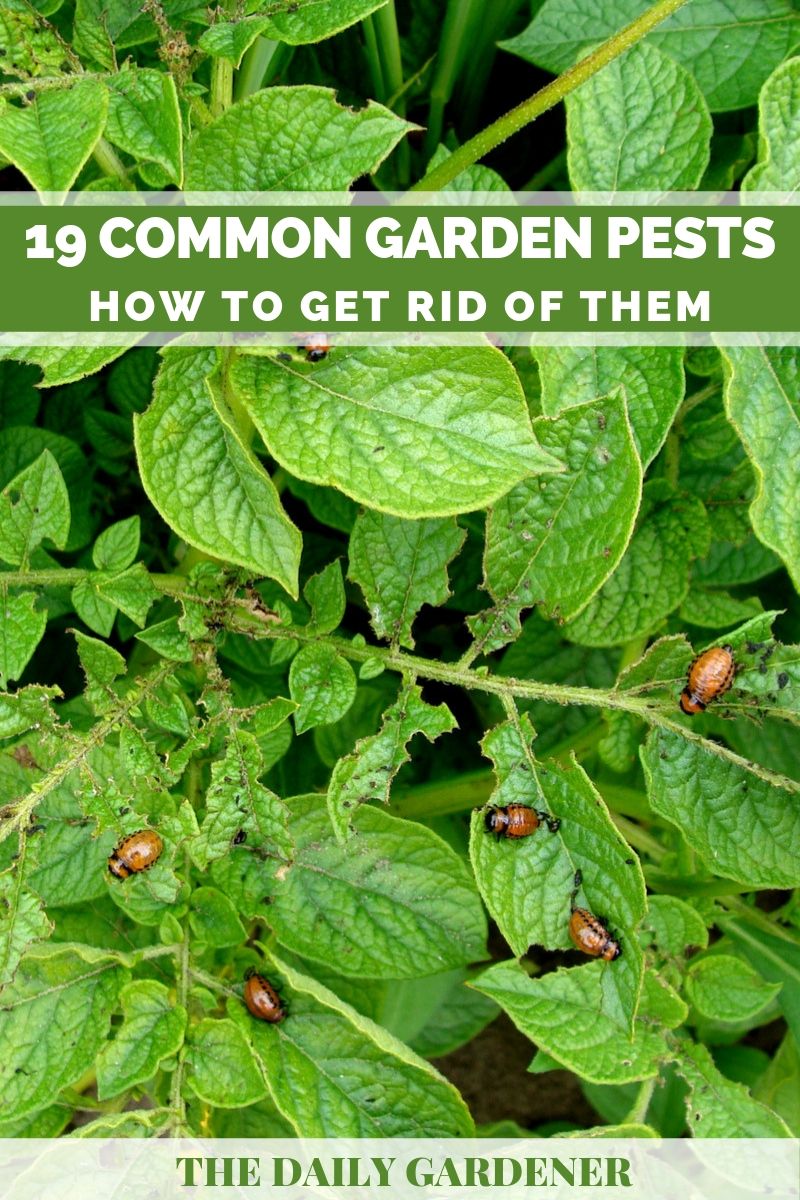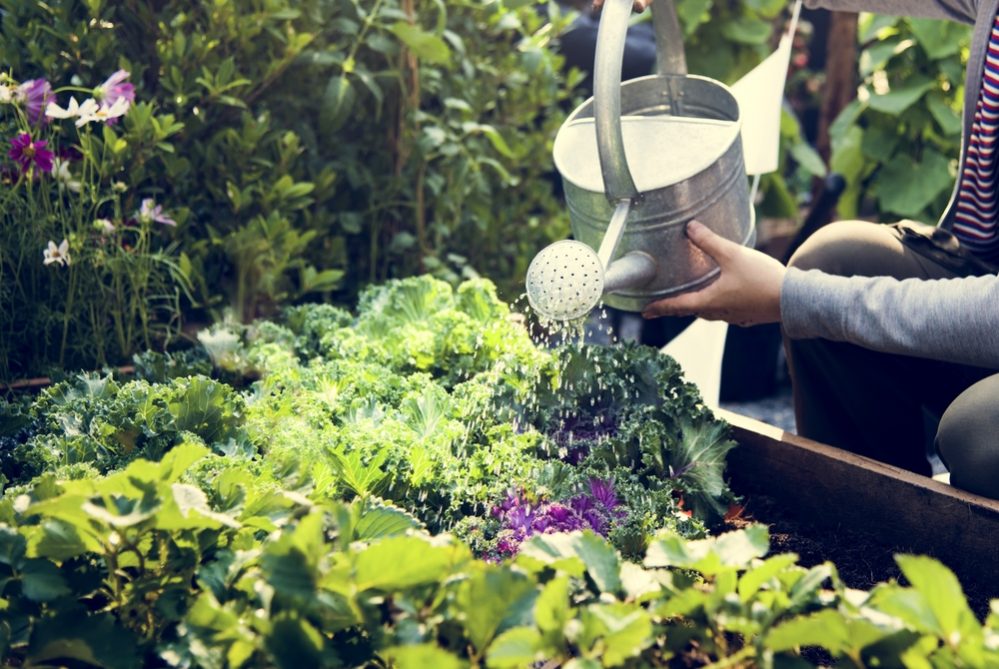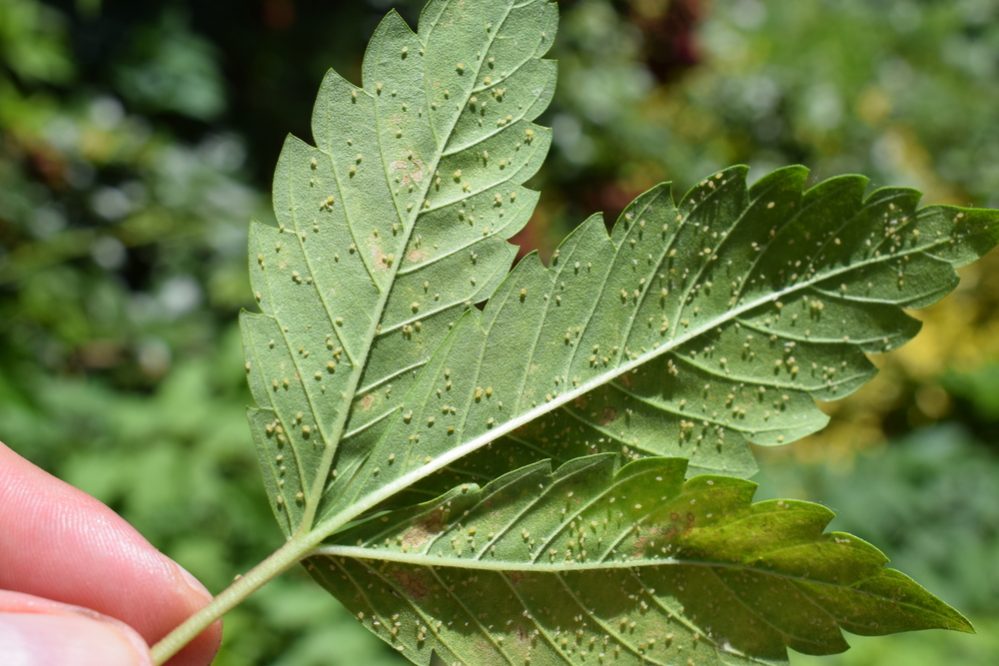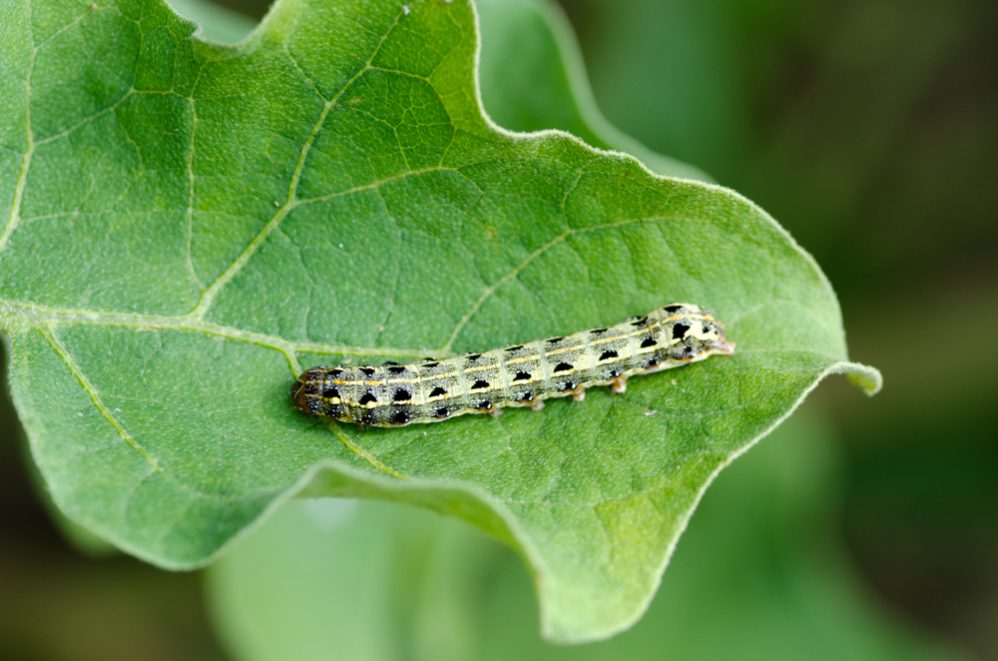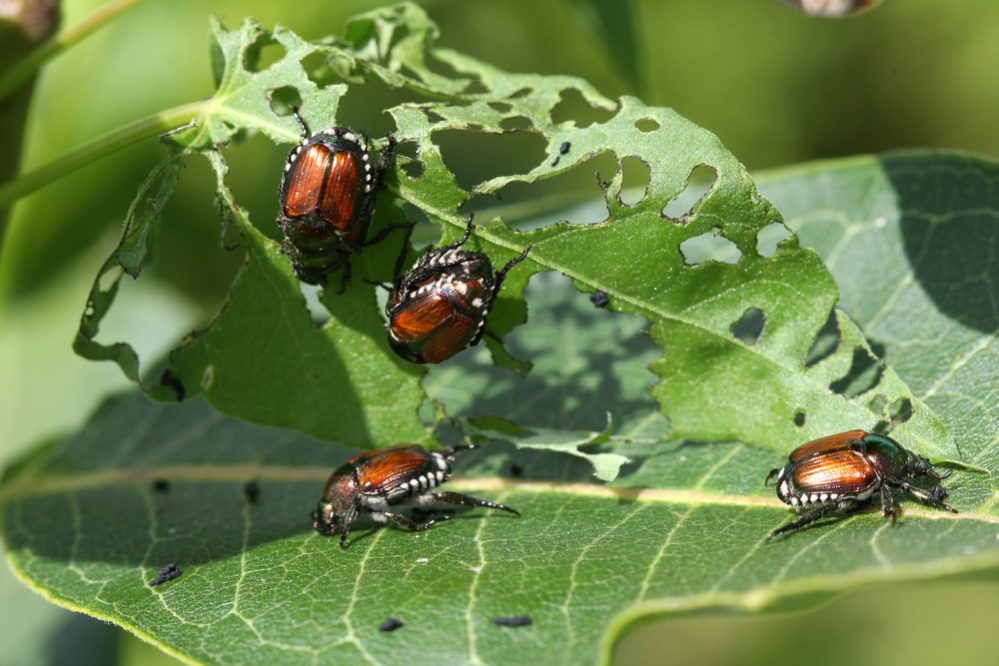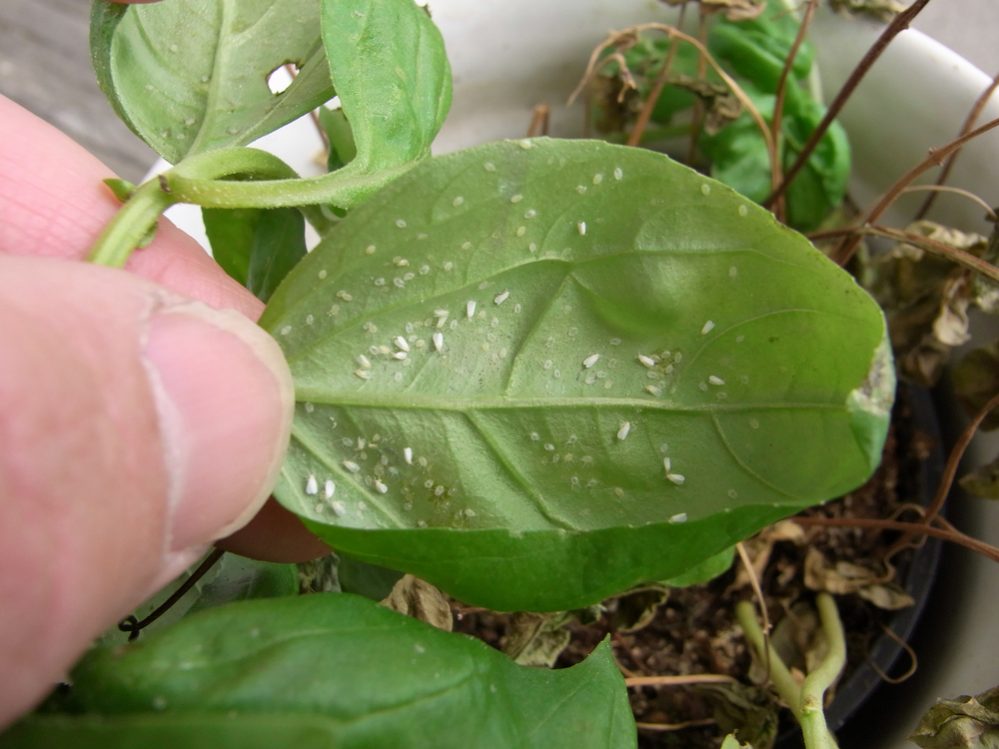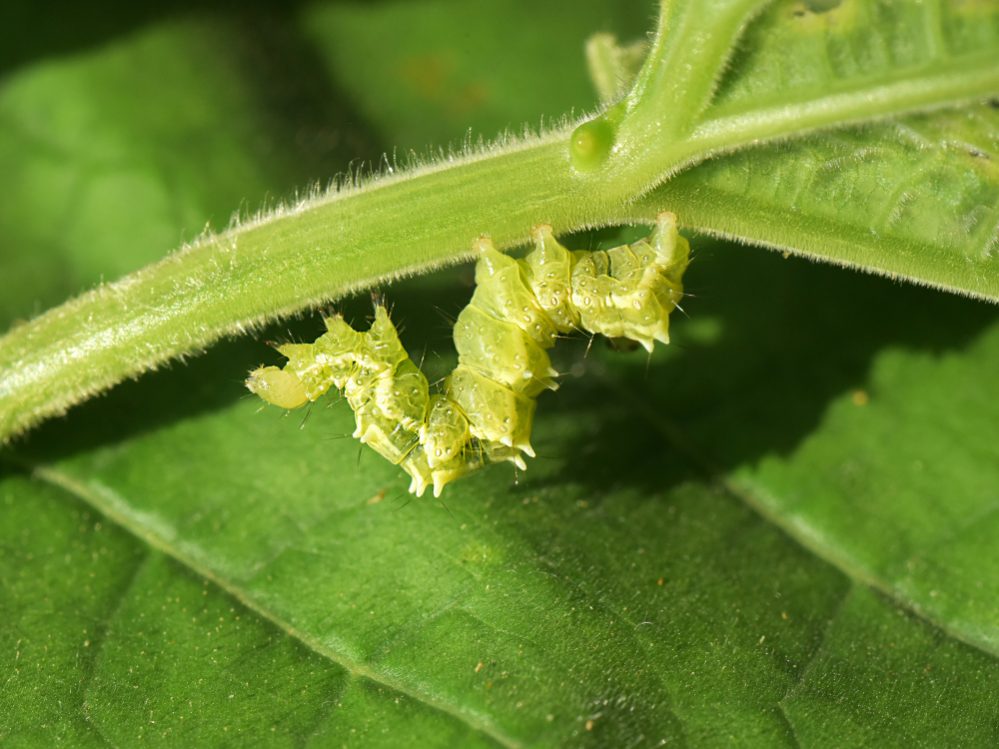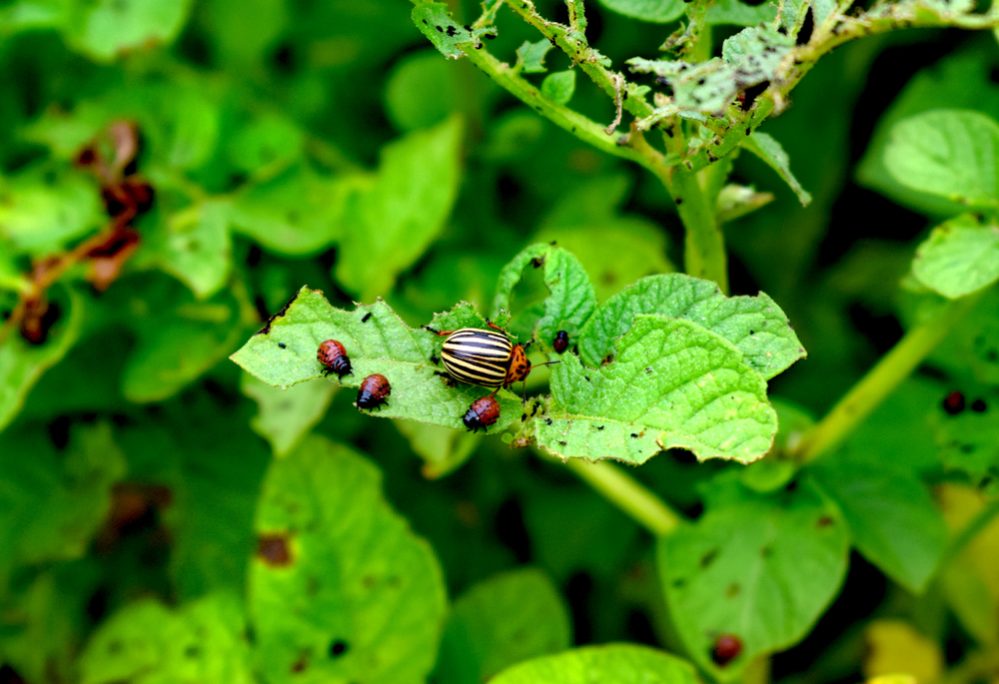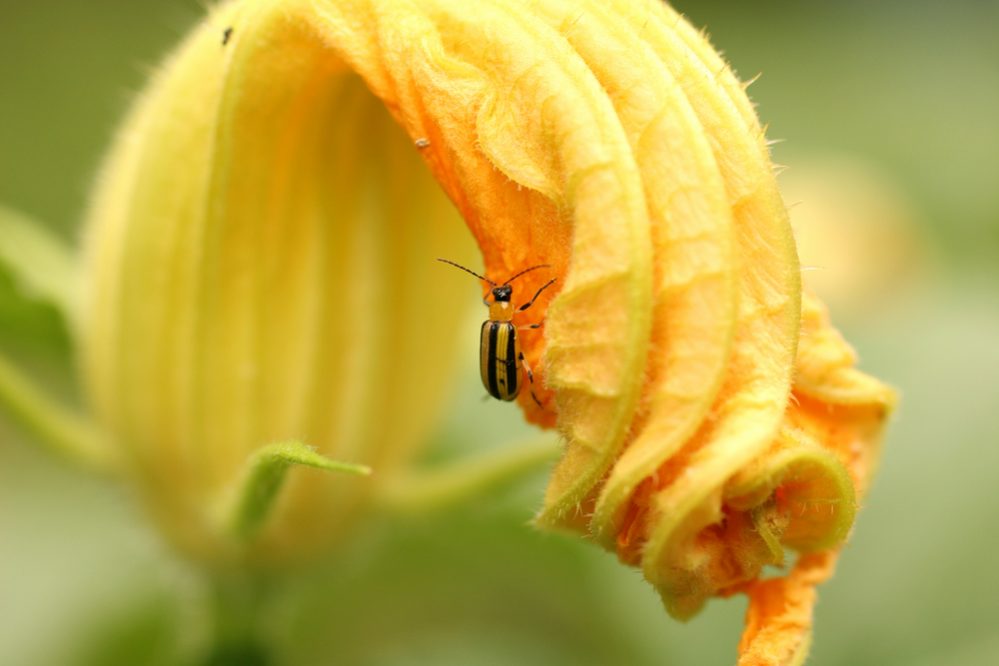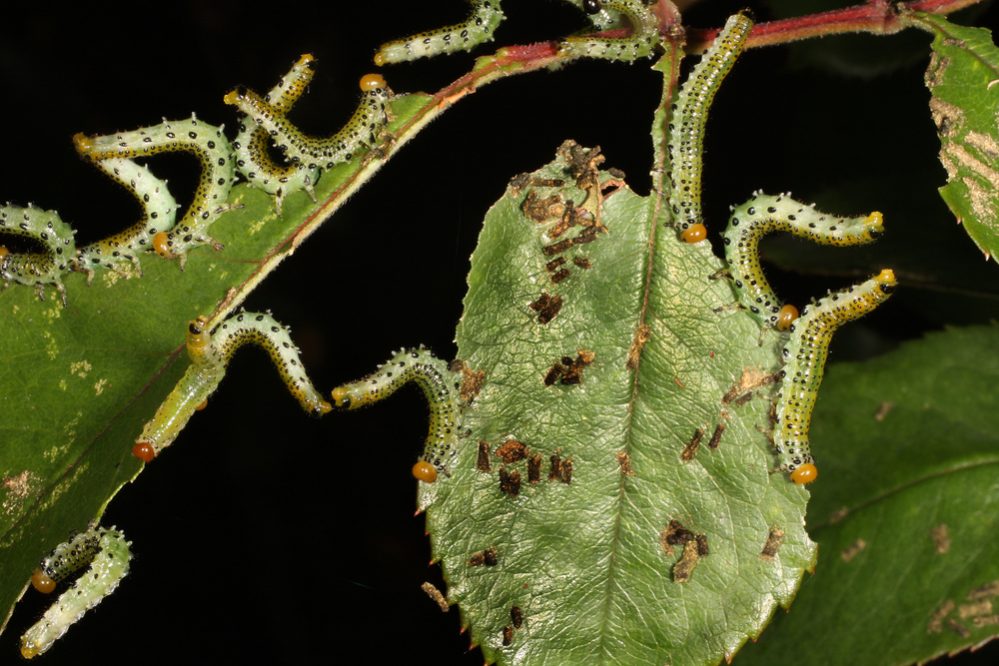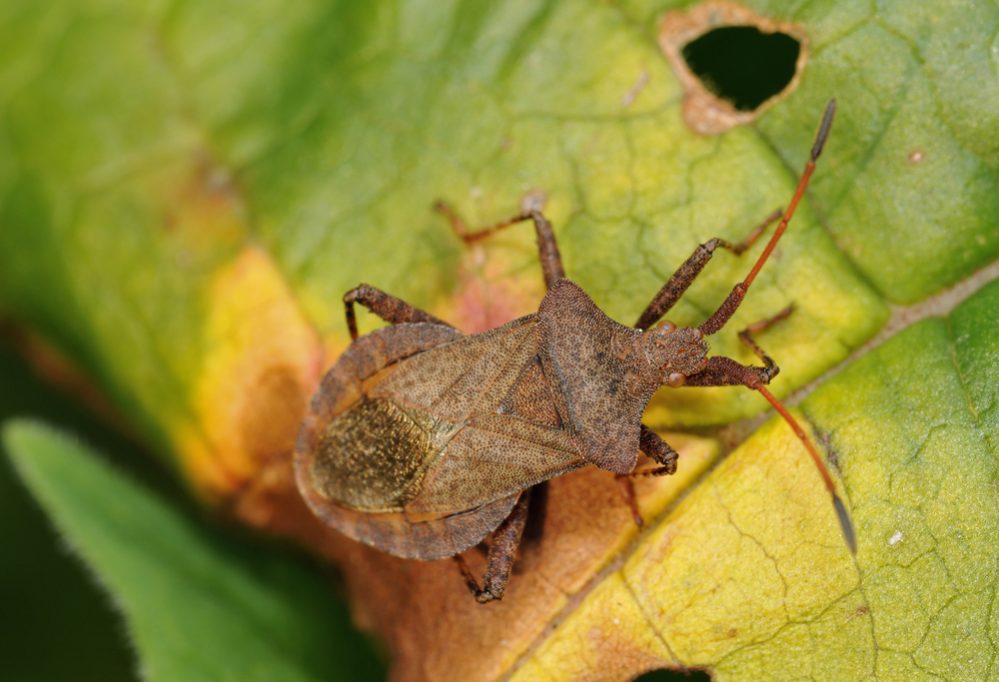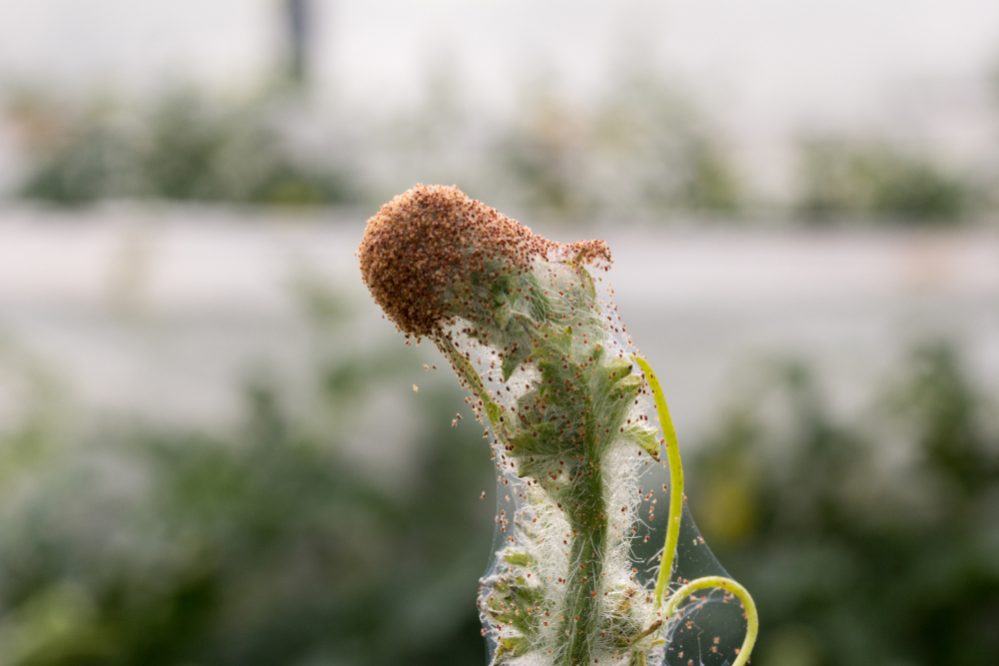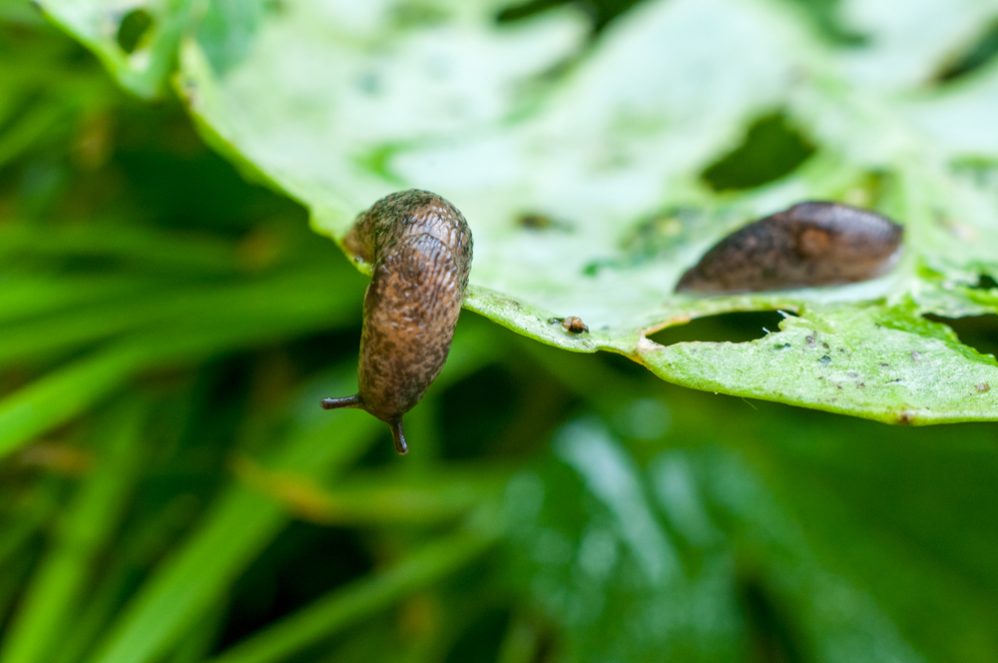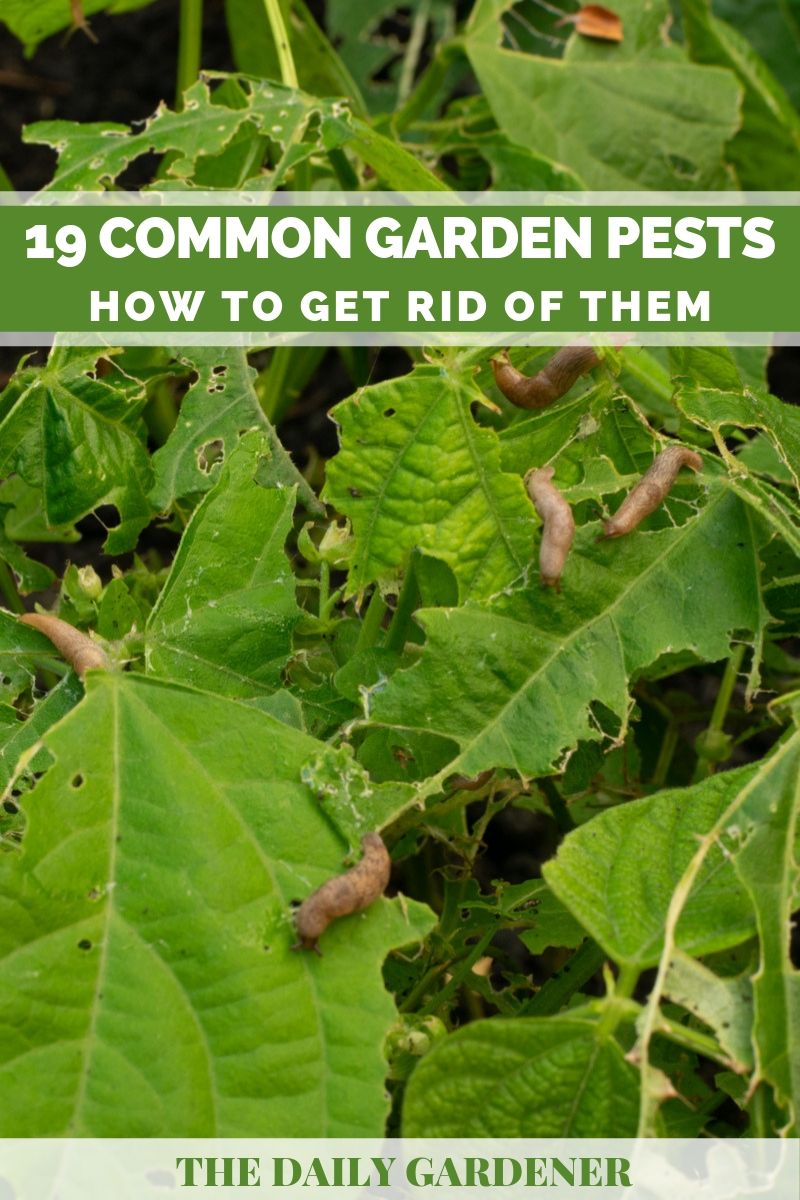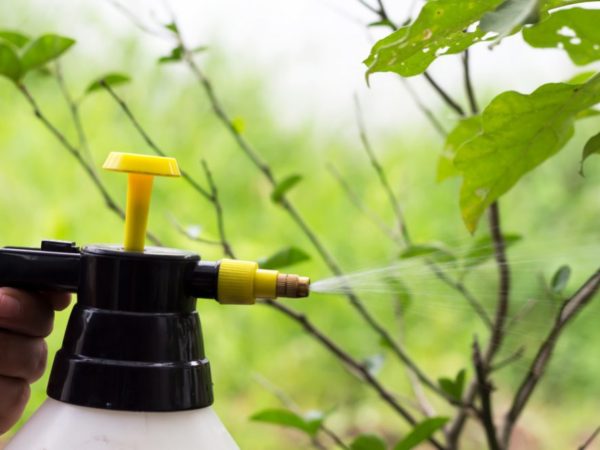To grow a healthy and vigorous garden, you need to take care of your plants properly. Unfortunately, one of the most severe issues you will face off is the fight with pests.
I will list you here some basic strategies you should consider before you decide what to plant. After that, we will talk about the most common pests you will have problems with.
Proper Ways to Get Rid of Pests
1. Build Healthy Soil
To get healthy and vigorous plants in your garden, supply the soil with necessary nutrients, oxygen, enough water, and root support. Only healthy soil can help plants to overcome pest attacks. Try these ways to build healthy soil:
- Limit the disturbance of the soil – Turning the soil has some advantages, but if you practice it routinely, you will discover all the disadvantages of this procedure. Preserve the living systems, including earthworms and microbes in the soil by keeping disturbance to a low level.
- Rotate crops – Sowing plants in different beds will increase crop yields because rotating plants every year will keep pests away from your garden.
- Plant cover crops – After the successful growing season, plant some cover crop in the garden such as clover, peas, or ryegrass. That will suppress weeds, improve the fertility and structure of the soil, and lessen erosion during winter.
- Compost – Each spring you should add about two inches (5 cm) of well-decomposed compost to supplement the nutrition of your garden’s soil.
- Mulch – Try to leave 4 inches (10 cm) of grass clippings to suppress weeds, reduce water evaporation, prevent soil compaction, and moderate soil temperature.
2. Attract Beneficial Predators
The secret is in diversity. You should encourage natural pests’ enemies to your garden and help you eliminate these horrible creatures. The best strategies which will help you control pest populations as much as possible:
- Plant flowers such as mint, daisy, fennel, alyssum, marigolds, zinnia, parsley, and coriander that will attract beneficial predators.
- You need the beneficial insects. Offer them pollen and nectar, and they will give you their best in return. Make sure that lady beetles, praying mantis, and green lacewings always feel welcome in your garden.
- Birds, toads, and frogs eat insects which make them your garden’s best friends. Invite them by putting a bowl or can of water somewhere between your plants and let them do the job for you.
3. Water Your Garden in the Morning
If possible, try to water your garden early in the morning. That way you will:
- Help your herbs to be well hydrated
- The foliage will dry off properly before evening, and thus they won’t be attractive to pests that prefer to nibble moist leaves
4. Monitor Your Garden
From time to time closely monitor your plants and be prepared to timely action if you notice any pest damage. In the case that the pests are not widespread, you may decide not to take action to avoid killing beneficial predators.
If you notice that pests have already caused massive damage, you should begin to use appropriate control methods:
- Mechanical pest solutions – Start your ‘fight’ with pests by hand-picking them. If this system is useless, try to use repellents, simmer cedar twigs, diatomaceous earth, insecticidal soaps, natural oils, horticultural oils, barriers, traps, lures, water pressure sprays, or insect vacuums to control pests’ population.
- Kitchen remedies – Find some effective pest remedies such as a boric acid powder, pepper, or citruses you have already had in your home and use them against pests.
- Biological pest solutions – If you can’t get rid of pests by using mechanical resources, it is the time for a little biology. There are a lot of viruses, bacteria, protozoa, and fungi that cause insect diseases you can use for pest control.
The essential thing is that they need to be entirely non-toxic to beneficial insects you want to attract, as well as to humans, our pets, and the rest of the wildlife. Without any concern, you can use Bacillus thuringiensis (Bt), Spinosad, and milky spore powder.
The best botanical insecticide you can use against pests in your garden
|
Botanical Insecticide |
Use Against |
|
Neem |
caterpillars, gypsy moth, leaf miner |
|
loopers, mealybug, thrips, whitefly |
|
|
Nicotine Sulfate |
aphids, spider mites |
|
thrips and other sucking insects |
|
|
Pyrethrum |
aphid, cabbageworm, flea beetle, flies |
|
harlequin bug, leafhopper, Mexican bean beetle |
|
|
spider mite, squash bug |
|
|
Rotenone |
aphid, cabbage worm, carpenter ant |
|
Colorado potato beetle, cucumber beetle, flea beetle, fleas |
|
|
Japanese beetle, loopers |
|
|
Mexican bean beetle, mites, spittlebug |
|
|
Ryania |
aphid, codling moth, corn earworm |
|
oriental fruit moth, thrips |
|
|
Sabadilla |
armyworm, blister beetle, cabbage looper |
|
cucumber beetle, harlequin bug |
|
|
leafhopper, stink bug |
Chemical solutions – Sometimes you are forced to try (organic) pesticides and just can’t avoid them. If you must use them, try to pick out the less toxic ones and always read the directions on the label before applying them. Avoid those that are not approved by the USDA and choose to start with the least toxic.
The Most Destructive Garden Insects – How to Get Rid of Them
1. Aphids (greenfly, blackfly, or plant lice)
Over 4,000 species of these tiny, soft, sap-sucking, pear-shaped vegetable garden pests live throughout the world. When you start gardening, you can expect these creatures cause a catastrophe in your garden including encouraging growing mold on leaves, sucking nutrients out of the greenery, and spreading various viruses. They usually attack lettuce, tomatoes, cabbage, and kale.
You will hardly identify them without knowing all the details about the species in your region and current life-stage. They can be green, gray, yellow, red, black, or brown and have two variations (winged and non-winged types). On the other hand, they are widespread and multiply very quickly, so probably every your plant suffer from their presence.
Fight them
- Take care to attract aphids’ natural predators such as lacewings and ladybirds
- Plant natural aphids’ repellents with strong odors such as chives, mint, basil, daisy, sunflower, and marigolds
- Use floating row covers in spring to protect your plants from the very beginning
- Trim affected stems and throw them in a bucket with boiling soap dilution
- Apply sprays made of garlic or hot-pepper
- Use the hose and spray plants off with a sharp stream
- Use natural products such as neem-based insecticides and horticultural oil
- To destroy eggs and larvae, you can spray your plants with a mixture of water and dish soap
2. Caterpillars
Probably everyone adores butterflies, but the caterpillars of some species such as giant swallowtail and cabbage white will destroy your flowers, vegetables, and most of the fruit by chewing on leaves along their margins.
These small green segmented worms are soft, but with a hard head capsule. However, keep in mind that some of these ugly creatures (110,000 different species) will become beautiful butterflies which will deter pests out of your garden.
Fight them
- Attract natural predators to come to your garden
- Put crushed eggshells all around your plants
- Hand-pick them
- Use floating row covers
- Use an adequate pesticide spray
3. Cutworms
These fat, gray or brown larvae of night-flying moths are a highly destructive pest which can devastate your vegetable garden, especially tomatoes, kale, cabbage, and broccoli.
Although adults can be gray, yellow, green, and brown, and hard to identify, you will easily identify and locate their C-shape curled larvae on the surface of the soil. As their name said, cutworms chew the tissue of the seedlings and cut them.
Fight them
- Protect young seedlings by cropping rotation
- Delay planting for a few weeks and let larvae starve to death
- Shallowly cultivate the soil before planting
- Till your garden in autumn and let cold temperatures kill the pupae
- Tie the base of stems with an aluminum collar
- Feed pests with wheat or cornmeal bran and let them die since they can’t digest bran
- Use beneficial nematodes mixed with water
- Hand-pick pupae
4. Mexican Bean Beetle
This vegetable garden pest destroys many types of beans and soy. Both light yellow larvae and adults of these insects damage leaves, but copper-colored adults (with exactly sixteen black spots) additionally feed on blossoms, stems, and pods.
Fight them
- Attract beneficial wasps (which feed with beetle larvae) with flowers in your garden
- Use floating row cover from the germination to the time of flowering
- Apply organic products such as hot pepper wax around the plants
- Buy insect spray Spinosad, a natural substance toxic to many insects
- Hand-pick bugs
- Use a neem oil spray or insecticidal soap
5. Japanese Beetles
You will quickly recognize these metallic blue-green beetles in your garden that destroy leaves and flowers. Their grubs (larvae) are fat and white, with a brown head. Expect them to eat the roots of your herbs. The huge problem with beetles is that they release pheromones, chemicals that attract other insects.
Fight them
- Hand-pick adults in the morning and put them into a bowl full of soapy water
- Apply insecticidal soap or neem oil
- Put floating row covers over your plants
- Add beneficial nematodes in the soil
- Use pesticides
6. Scales
Unfortunately, more than 1,000 of 8,000 existing species of these insects live in North America. You can find them on the trees and shrubs in your backyard, but they also affect houseplants and greenhouse plants as well.
Whether it’s about bumps-looking females, small, flying males, or tiny, soft larvae that crawl on leaves, they all suck plant sap and cause foliage to drop off.
Fight them
- Destroy parts of infested plants if the infestation is small
- Use soapy water and scrub insects from twigs with a soft brush and rinse the leaves after a procedure
- Encourage beneficial predators
- Use summer oil spray, neem oil, or dormant oil for widespread infections
7. Cabbage Loopers
These small caterpillars are probably one of the most destructive pests you can find in your vegetable garden. They prefer cruciferous plants such as cabbage, cauliflower, broccoli, collard greens, and kohlrabi, but they also attack spinach, cucumbers, tomato, potato, and leaf lettuce.
The adults are gray, with a typical white or silver letter ‘Y’ on the forewings. Their smooth and green pupae have thin white strips on their backs, and they crawl in a looping motion.
Fight them
- Buy varieties of plants tolerant on these insects
- Plant flowers such as sunflower, marigolds, alyssum, or daisy among vegetables because they attract beneficial insects
- Clean up all plant debris in fall, after harvest
- Since the larvae can overwinter on weeds, remove them regularly
- Hand-pick insects as soon as you notice a few caterpillars on the young plants
- Use floating row covers to protect your plants of laying eggs
- Use insecticidal soap and sprays
- Spray plants with Bacillus thuringiensis(Bt) which cause bacterial disease that attacks larvae
8. Grasshoppers
These green, olive, or brown jumping insects with red or yellow marks are one of the toughest insect pests to fight off. They spend a day chewing leaves and escaping their enemies, including flies, the most dangerous creatures for them. These flies lay eggs near the eggs of a grasshopper which are food for their newborns.
Fight them
- Plant calendula, daisy, sunflower, and marigolds to attract beneficial insects (for example, robber flies and spiders)
- Attract birds and even snakes, their natural enemies
- Use a microsporidium fungi Nosema locustae that affect the digestive system of young grasshoppers and kill them by causing lack of appetite
- Use insecticides that contain permethrin or carbaryl against present bugs, but you should know that they can’t keep new insects away from your garden
- Sometimes nature regulates decreasing the population of grasshoppers, and they starve to death when early summer is cold and wet
9. Whiteflies
Since that those little, soft-bodied, white, flying bugs are often well-camouflaged, you can’t easily notice them in your garden. Adults make clusters on the lower side of tomatoes, sweet potatoes, or peppers’ leaves where they suck juices and produce honeydew, a sticky substance that causes a fungal disease on leaves.
Fight them
- Hang sticky cards above your plants to capture the adults
- Use the hose and spray plants off with a sharp stream early in the day
- Use insecticidal soap, hot pepper wax, and neem or horticultural oil
10. Tomato and Tobacco Hornworms
These large, green, striped caterpillars feed on tomato and tobacco plants. They are well camouflaged, but you can spot them easily because they are large and leave dark droppings on leaves. Their adults are large moths with gray or brown wings.
There is a greater possibility to have problems with tobacco hornworms if you live in the South, while tomato hornworms are more represented in the North. Except for tomato and tobacco, they also damage potato, eggplant, and pepper leaves.
Fight them
- Hand-pick insects and drop them into soapy water
- Attract lacewings and ladybugs that feed on eggs and immature larvae of hornworms
- Plants with tiny flowers attract a parasitoid wasp Cotesia congregata which use hornworms and eventually kill them
- Spray plants with Bacillus thuringiensis (Bt)
- Use organic insecticide Spinosad to destroy young larvae
11. Leafminer
Generally, you don’t need to think about the adult forms of these bugs because these flies are harmless to plants’ foliage. The problem represents green or brown larvae which feed on the tissue of spinach, beets, chard, blueberries, and nasturtiums.
Fight them
- Cut off damaged leaves to prevent the development of another generation
- Plant fragrant flowers to attract beneficial insects
- Use floating row cover to prevent adults from lay eggs on the plants
- Neem oil and Carbaryl are rare products that can control leafminers because their larvae are usually hidden between leaf tissues
12. Colorado Potato Beetle
I have to admit that I hate those horrible yellow-orange creatures with black stripes on their wings that once devastated my garden. You can find them on potatoes, eggplant, tomatoes, and petunias throughout the US and expect them to kill your plants and reduce yields.
Fight them
- Hand-pick every single bug you spot and destroy it
- Use floating covers
- Discover the advantages of deep straw mulches
- Make neem oil spray
- Attract their natural predators
13. Cucumber Beetles
Adult bugs are bright yellow with stripes or spots, which depend on their species. They affect cucumbers, melons, squashes, pumpkins, and gourds by transmitting bacterial wilt and making small holes in the foliage and flowers.
Fight them
- Plant bacterial wilt-resistant veggies and herbs
- Attract beneficial predators
- Hand-pick and drown them in soapy water
- Use floating row cover on time to allow pollination
- Apply insecticidal soap
- Prevent egg laying by mulching susceptible crops with straw
- Keep your garden clean after the end of the season
- Don’t hesitate to use spinosad-based organic pesticides if it is necessary
14. Flea Beetle
These tiny black vegetable garden pests can cause considerable problems to your radishes, potatoes, corns, tomatoes, and eggplants by making round holes in the leaves. Plus, their larvae feed on plant roots.
Fight them
- Practice crop rotation
- Pit sticky cards above your plants
- Add beneficial nematodes in the soil
- Destroy adult insects with garlic oil, neem oil, hot pepper wax, or Spinosad
15. Fall Webworms
These small white moth’s caterpillars usually create colonies that can quickly ruin your garden in autumn. The cycle starts when the moths lay eggs on the underside of foliage. In most cases, they choose pecan, willow, alder, walnut, as well as apple, peach, maples, and pear trees for that purpose.
Fight them
- Let them be because they probably can’t cause significant damage to your trees at the end of the season (the time for creating colonies)
- Use a shovel or rake to remove webworms physically
- Cut off the affected branches
- Plant sunflowers to attract tiny wasps and other beneficial insects
- Apply neem oil spray
- Use Bacillus thuringiensis
16. Sawflies
Surprisingly, sawflies are little wasps, but they are not beneficial insects. On the contrary, adult forms lay eggs on leaves, and their worm-like larvae feed on them. After forming clusters, they destroy foliage of trees and surrounding shrubs.
Fight them
- Grow plants that are not closely related with species these bugs usually attack
- Begin pests control while sawflies are in the larval stage
- Use Spinosad or Malathion
17. Squash Bugs
There are big chances that you will spot these insects in your vegetable garden. Unfortunately, it is extremely tough to control this dark brown bugs that suck juices from leaves of cucumbers, squashes, zucchini, pumpkins, and melons.
Fight them
- Try to cultivate pest-resistant varieties of veggies
- Plant flowers to attract beneficial insects
- Rotate your crops
- Hand-pick pests and drop them into soapy water
- Use trellises in your vineyard to avoid the vines lay on the soil
- Put floating row covers
- Use a piece of duct tape to remove egg clusters from leaves
- Apply neem oil or insecticidal soap to destroy nymphs
18. Spider Mites
These tiny, spider-related pests feed on plant juices and leave behind fine, silk webs on the foliage.
Fight them
- Attract predatory insects such as assassin bugs, lady beetles, and praying mantises which eat these annoying bugs
- Spray foliage with a mix of buttermilk, water, and wheat flour
- Use horticultural oil or insecticidal soap
19. Slugs and Snails
Slugs are slimy, gray, orange, brown, or mottled soft-bodied mollusks without shells and legs that leave slime trace behind. You can expect them to feed on various vegetables and plants in your garden. They chew plant tissue and can cause complete defoliation of plants, especially young ones.
On the other side, snails are the shelled gastropods that live at all continents. Adults have a hard, coiled outer, protective shell to hide in when they are in danger. They represent not only garden pests, but also food for people.
Fight them
- Attract birds, frogs, toads, and even snakes to come to your garden because slugs are their natural food
- Water your garden early in the morning, so the soil will have time to dry by nightfall (slugs and snails prefer wet conditions and can’t stand dry soil)
- Hand-pick both species and drop them into soapy water
- Make beer traps and let slugs fall into
- Sprinkle diatomaceous earth, wood ashes, scattered eggshells, sharp sand, or crushed seashells around your plants to keep slugs away
- Put copper strips around your plants to trigger a chemical reaction between the slime and the metal, which will prevent their feeding
- Put a wooden board on the soil and collect snails that have found shelter beneath them
- Plant fragranced flowers with furry leaves
- Spray snails with a vinegar solution
- Try slug baits with iron phosphate
Summary
When you become a gardener, be prepared not only to enjoy watching your plants grow but for the real fight with the ugly and persistent enemy – pests! They will try to destroy every leaf on your trees, bushes, flowers, or veggies that you cultivate with so much love and care.
Surely, you can choose the easy path and use pesticide to solve this unpleasant issue. However, as every exemplary gardener, you should have a target goal to protect both your plants and to take care of the environment. It is a hard task but achievable. Go for it!
Don’t forget to pin it!


